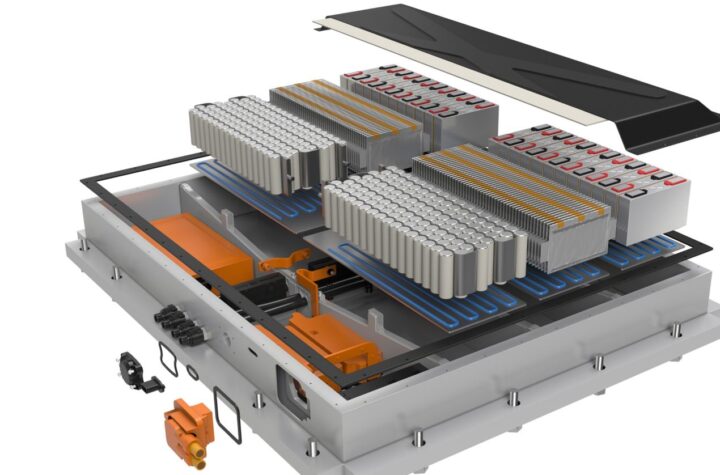
Once again we find ourselves debating how electric vehicles (EV) can be a main source of transportation in the world. The events putting us on that course have been rather tortuous. In 1973 the world, in particular the U.S., was jolted into the realization that its major supply of petroleum could be cut off, leaving dozens of millions of vehicles idle on its roads. As the Arab oil embargo through the Organization of Petroleum Exporting Countries (OPEC) dragged on, the lines at gas pumps grew longer until 17 March 1974 it ended [1]. At that time, there was much discussion about alternative renewable energy, not only as a source of vehicle fuel but for power production all across the infrastructure. There were major efforts to bring forth solar and wind, in particular, but other forms of energy production using geothermal, hydroelectric, and even very novel ideas like fuel cells. Not only was there a heightened awareness of the fragility of petroleum supply but there were rising concerns about the environment, in particular, pollution, land spoilage, and global warming. The global warming issue has been around ever since the term was coined 8 August 1975 in a science paper by Wally Broecker in Science entitled “Are we on the brink of a pronounced global warming? [2]”. As the embargo crisis receded, so did all the ideas of the need to conserve petroleum in the collective social memory. Thirty years down the road, we face not so much the threat of an embargo, but peak oil, where it has been found that we may have passed a point where oil consumption surpasses the discovery of new sources [3]. Too, there are greater environmental issues, made prominent after the Exxon Valdez incident in 1989 and more recently with the disastrous British Petroleum Deepwater Horizon ”oil gusher” incident in the Gulf of Mexico in 2010. Middle Eastern wars over oil, highlighted the cost of extracting this fuel. As motor vehicles consume the greater part of petroleum in the world, it stood to reason that there would be a search for alternative sources of power, in light of the newly perceived need to address the petroleum issue. Numerous ideas have arisen over the past decade about how to fuel vehicles, some of those innovations involving fuel cells (refined development occurring as a result of space programs), natural gas, and electric. Here, we focus on electric powered vehicles, their problems and prospects [4].
Using electricity to drive cars is not a new idea, it originating as far back as 1828, when Ányos Jedlik, a Hungarian inventor of a motor created a model of a vehicle powered by it. A primitive electric carriage was made in the latter 1830s by Scottish inventor Robert Anderson, but it took the development of rechargeable batteries to bring forth EVs in Europe, staring in the mid 1800s. The U.S. had to wait for its electric cars until William Morrison built a six passenger car in 1890. From that point onward electric cars became popular, with Anthony Electric, Baker, Columbia, Anderson, Edison, and Studebaker, among others being favorite brands.
In 1900, more cars on the road were electric than steam or gasoline. However, they were for localized use only, as there were no recharge stations out in rural areas. In addition, because the batteries were lead-acid, the range was severely limited, and the lifespan, because of the numerous recharges required, was not that long. Improvements in the internal combustion engine (ICE) and mass production by Henry Ford’s automobile plants to drive down costs pretty much demolished the electric car market.
Today, people are back on track in attempting to further the technology of EVs. Mostly everyone is aware of the ubiquitous golf carts that pass by silently, and these have served well, but the scale them upward to road use has not been easy.
How an EV works
Overall, the arrangement of components is rather simple and straight forward, especially in comparison to an ICE car. An electric motor drives a car, just like it does in clocks, washing machines, or knife sharpener. Three types of motors exist: direct current (DC) brushless, alternating current (AC) induction, and permanent magnet (PM). The first gives the highest speed, but the car accelerates more slowly. The AC motor accelerates the vehicle faster but has only an average speed. The PM motor is in between the DC and AC motors. The DC and PM motors can run directly from the batteries, while the AC motor needs an inverter. Current passes from the battery to a variable resistor actuated by the “gas” pedal then to a controller that regulates current to the motor. There can be just one motor propelling one or more wheels, or each wheel can have its own motor.
To help recharge the battery somewhat, there is regenerative braking, when the inertia of the vehicle drives the generator part of the electric motor during slowdown. For braking, itself, the vehicle load is used as a way of “backpedaling” to slow down the vehicle. EVs don’t need a standard or automatic transmission, but to simulate driving in a regular car because of peoples’ force of habit, various arrangements for “shifting” have been invented. The shifting arm operates as a switch that sends signals to the controller but has labels, such as “park”, “reverse”, “drive” “neutral”, and “low” (PRNDL) as a transition device. The “park” and “neutral” usually disengages the motor and activates a brake. Some cars allow the motor to pull a bit to simulate the feel of an automatic transmission in ICE cars. In an ICE car, the weight of the car helps slow it down, but an EV car will engage the regenerative brake system to create the same effect. The “low” selection will enhance this [8].
Limitations of the EV
A sad little story emerged in 1990 of General Motors’ attempt to literally kill electric cars. In 1990 the California Air Resources Board made a ruling called the Zero-emissions vehicle (ZEV) mandate which said that in order to continue selling gasoline vehicles in that state auto manufacturers had to sell electric vehicles, as well. General Motors (GM), Toyota, Honda, Ford, Nissan, and Chrysler; produced among them 5,000 EV1s. The oil industry and automobile manufactures were enraged, and lobbied and filed lawsuits to have the mandate canceled. GM, perhaps the most upset, recalled all its EV1s and proceeded to destroy them by crushing. Some were donated to universities and museums after being disabled. GM selfishly refused to allow owners to pay the lease value on 78 remaining ones, and they too were crushed. One of their excuses was they didn’t want to follow the U.S. government mandate to keep spare parts for the EVs already deployed. Protesters, accompanied by some actresses were arrested in protests to GM about the car’s destruction but their efforts were fruitless. GM claimed that no one really wanted them, the driving range was too low (80-100 miles), and they were too expensive.
However, the EV1 were durable, clean running, and required no tune-ups or much maintenance. To highlight the whole controversy and bring home the view that “big oil” was behind the destruction, a movie was made about this incident, Who Killed the Electric Car?
Problems
In reality, many limitations beset electric vehicles at present, not the least of which
is battery weight. The central problems are three: 1) Battery technology has not
been developed to a point to make electric cars completely supplant gasoline
powered ones. 2) The environmental costs of battery technology may be so great so
as to make implementation unacceptable. 3) The pollution that virtually eliminated
with an EV may be transferred to the power plants required to recharge the cars.
JD Power, a global marketing information services company and responsible for customer satisfaction surveys, mainly in the area of automotive quality [10], produced a report in November 2010, Drive Green 2020-More hope than reality [11], that outlined issues with EVs, and it is worth recapitulating what it said.
Because of the inability of batteries to run a vehicle very far – often only about 100 miles – people are hesitant to drive them except for very short distances for afraid they will be stuck somewhere without a way of recharging them. Coupled with this is the simple lack of infrastructure for recharging. Although people can recharge the vehicles at home and more charging stations are appearing in the metropolitan areas, a similar problem still exists as it did back when electric vehicles were being used in the early 1900s: no way of recharging existed out in rural areas. This effectively limits electric cars to urban areas.
While acceleration in EVs and hybrids even surpass internal combustion engine (ICE) cars, overall performance of EVs is not as good as ICE ones. In terms of fuel economy, it is questionable whether they surpass that of the ICE, given the cost of electricity and, especially the cost of the battery replacement every few years. This gets to the issue of the battery, itself. Although research is progressing on new battery types and extending the life of current ones, still, the efforts haven’t produced a battery that is of lower cost, recyclable, and performs as well as ICE technology. Charging time for the battery is an issue, at least a four hour stretch of time being required. Quick charges still require at least 30 minutes, and not only does this degrade the battery faster, but people do not have the time or patience to wait for the recharge, especially when compared to just a few minutes to refuel an ICE car. Backtracking to the issue of fuel economy and costs for it is the cost of the vehicle, itself, given its limitations to urban areas. J.D. Power data indicates that people simply are not rushing out to buy EVs, especially with the current (2011) economic state of affairs. The report states, “If the supply of oil remains steady, as is widely expected, [12]” and “based on the relatively stable supply of global oil forecast to be available through 2020 [13],” and “… there are likely three energy sources or technologies that are best positioned for a greater role in future powertrain configurations: diesel, natural gas, and improvements to the IC [14]”. However, this is an error, as peak oil is upon us, and the search for more sources of petroleum is getting more contentious, especially when current events and environmental costs are considered [15]. On the other hand, natural gas, fuel cells, an hybrids may provide a sufficient bridge for buying more time to develop EVs to be equal to or better than ICE cars.
Want to learn more about current and future developments
in Electric Vehicles?
Visit our Download Center for more articles, whitepapers and interviews:
References (Subject is indicated by URL – accessed 14 October 2011)
[1] http://en.wikipedia.org/wiki/1973_oil_crisis#Chronology
[2] http://en.wikipedia.org/wiki/Global_warming
[3] http://www.theoildrum.com/node/5247
[4] http://avt.inl.gov/pdf/fsev/history.pdf
[5] http://en.wikipedia.org/wiki/History_of_the_electric_vehicle
[6] http://en.wikipedia.org/wiki/History_of_the_electric_vehicle
[7] http://www.fueleconomy.gov/feg/evtech.shtml
[8] http://en.wikipedia.org/wiki/Electric_car
[9] http://en.wikipedia.org/wiki/Who_Killed_the_Electric_Car%3F
[10] http://en.wikipedia.org/wiki/J._D._Power_and_Associates
[11] http://businesscenter.jdpower.com/JDPAContent/CorpComm/pdfs/DriveGreen2020_102610.pdf
[12] Ibid., p. 2
[13] Ibid., p. 17
[14] Ibid., p. 64
[15] http://www.theoildrum.com/node/5247, http://www.pennenergy.com/index/articles/display/0663918147/articles/pennenergy/microblogs/rafael-sandrea/natural-gas-supply–potential-setbacks.html, http://ideas.repec.org/a/eap/articl/v39y2009i2p255-270.html , http://www.ourbusinessnews.com/natural-gas-supplies-within-5-year-average , https://docs.google.com/viewer?url=http://www.postcarbon.org/reports/PCI-report-nat-gas-future-plain.pdf&embedded=true&chrome=true , and http://environmentalheadlines.com/ct/2011/05/12/the-truth-about-natural-gas-supply-costs-environmental-impact/ , as examples
[16] http://www.smartplanet.com/blog/smart-takes/solar-roadway-that-generates-heat-energy-unveiled/5335
[17] http://www.gizmag.com/harvesting-solar-heat-asphalt/16904/
[18] http://www.piezo.com/prodproto4EHkit.html, http://www.smart-material.com/Smart-choice.php?from=MFC, http://www.advancedcerametrics.com/pages/contact/,
http://www.mide.com/products/qp/qp10ni.php, http://www.newenergytechnologiesinc.com/contact
[19] http://www.gizmag.com/google-invests-168-million-in-solar-power-tower/18383/ ], thermal depolymerization [http://www.youtube.com/watch?v=CWf9nYbm3ac&feature=related
[20] http://www.gizmag.com/enviromission-solar-tower-arizona-clean-energy-renewable/19287/
[21] http://en.wikipedia.org/wiki/Zinc%E2%80%93air_battery
[22] http://en.wikipedia.org/wiki/Molten_salt_battery
[23] http://en.wikipedia.org/wiki/Zinc-bromine_flow_battery
[24] http://en.wikipedia.org/wiki/Vanadium_redox_battery
Resources (Subject is indicated by URL – accessed 14 October 2011)
http://www.cleancaroptions.com/html/battery_electric_vehicles.html
http://en.wikipedia.org/wiki/Electric_car or http://en.wikipedia.org/wiki/Electric_vehicle http://www.fueleconomy.gov/feg/evtech.shtml
http://en.wikipedia.org/wiki/Electric_car http://www.sweethaven02.com/ModElec/electrical01/Lesson0402.pdf
http://en.wikipedia.org/wiki/History_of_the_battery
http://batteryuniversity.com/learn/article/how_to_prolong_lithium_based_batteries
http://www.youtube.com/watch?v=KlI1duF4K9o
http://en.wikipedia.org/wiki/Leyden_jar
Batteries for Electric Cars – http://www.bcg.com/documents/file36615.pdf
http://en.wikipedia.org/wiki/Electric_vehicle_battery
http://www.energyharvesting.net/ http://en.wikipedia.org/wiki/Piezoelectricity#Mathematical_description
http://inhabitat.com/new-crash-proof-electric-vehicle-battery-can-be-mass-produced/
http://www1.eere.energy.gov/vehiclesandfuels/avta/light_duty/fsev/fsev_batteries.html
http://spinnovation.com/sn/Batteries/Batteries_and_Ultracapacitors_for_Electric_Hybrid_and_Fuel_Cell_Vehicles.pdf
http://en.wikipedia.org/wiki/Electric_vehicle_battery
http://www.bcg.com/documents/file36615.pdf” –
http://en.wikipedia.org/wiki/Electric_car
http://www.iqpc.com/Event.aspx?id=473352 http://www.cleancaroptions.com/html/battery_electric_vehicles.html http://www.howstuffworks.com/electric-car.htm Future Car series












More Stories
DuPont materials science advances next generation of EV batteries at The Battery Show
Cybord warns of dangers of the stability illusion
Avery Dennison PSA tapes support rapid evolution of EV batteries